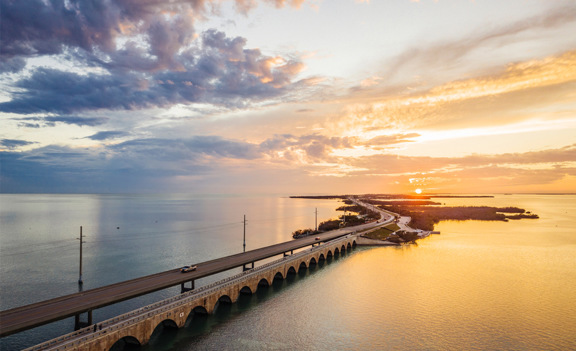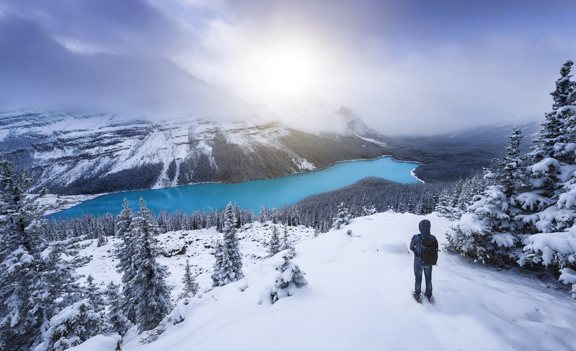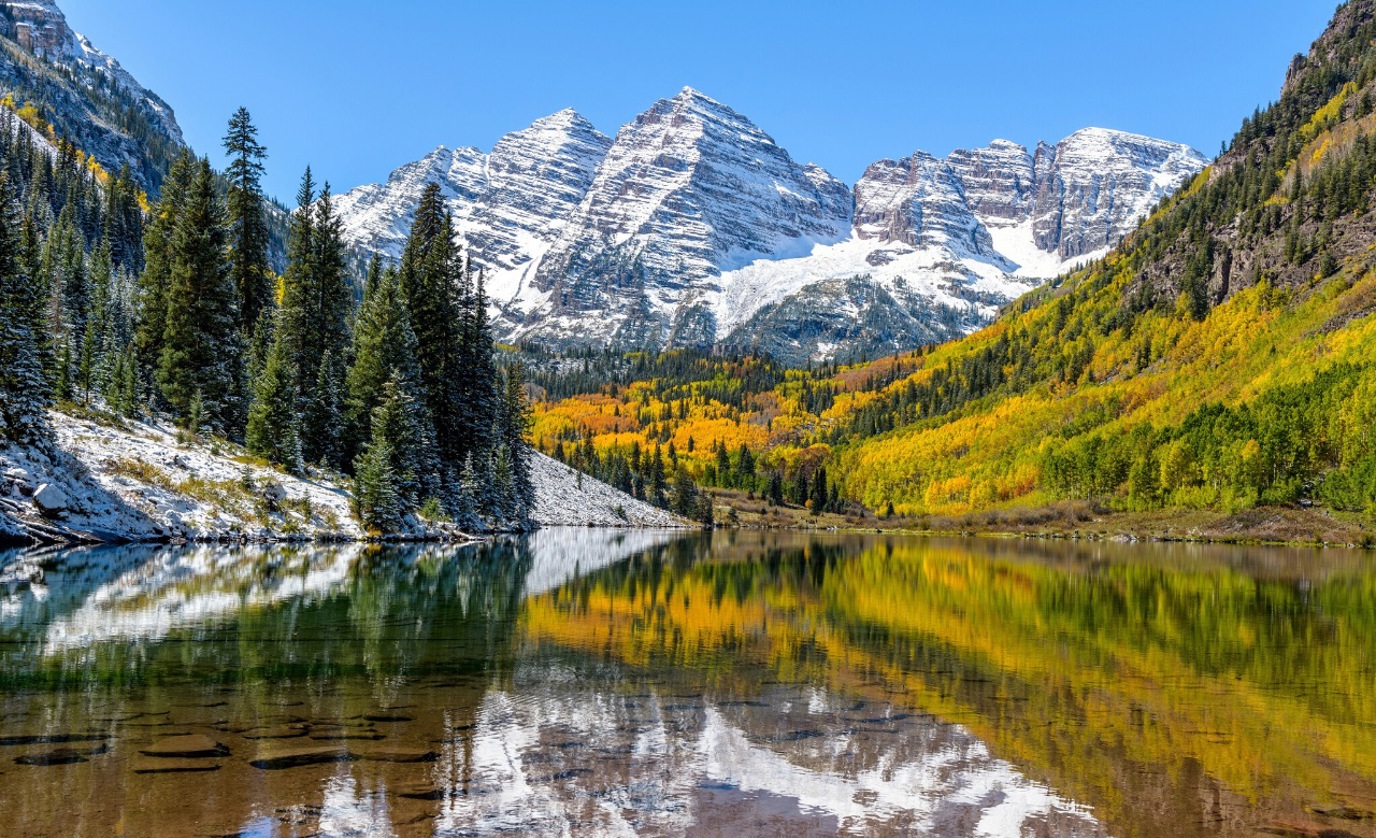
Ready to get away from the hustle and bustle of daily life and escape to the great outdoors?
Rocky Mountain National Park’s 415 square miles of meadows, mountains, and forests invite you to experience the most exceptional outdoor views in the country!
Pack the RV and get ready to hit the road because we’ve compiled your complete guide to RV camping in Rocky Mountain National Park!
Table of Contents
-
Best Time to Visit Rocky Mountain National Park for RV Camping
-
Timed Entry Rocky Mountain National Park
-
Wildlife in Rocky Mountain National Park
Rocky Mountain National Park Facts
If you are looking for an escape, the Rocky Mountains are the perfect destination for all. With a rich geological history that dates back millions of years, we invite you to take a step into the rich landscape and check out these interesting Rocky Mountain National Park facts!
-
The Rocky Mountains extend from British Columbia into the United States, spanning Montana, Wyoming, Idaho, Colorado, New Mexico, Utah, and Arizona. This makes the Rocky Mountains the longest mountain range in North America and the second-largest mountain range in the world.
-
The Rocky Mountains are 76 million years old. Even more, some rocks in the park date back 1.7 billion years.
-
People have visited the area for at least 11,000 years.
-
In 1803, the park was acquired during the Louisiana Purchase, but it wasn’t declared a national park until 1915.
-
The highest peak is 14,440 feet in elevation on Mount Elbert, Colorado.
-
There are 600 buildings in Rocky Mountain National Park, 150 of which are historic structures.
-
The park has an average of three million visitors a year.
-
The park is home to many types of fish and 282 species of birds. Additionally, there are over 900 different kinds of plants in the park.
-
The park has 355 miles of trails and 450 miles of streams and lakes.
-
Trail Ridge Road in Colorado is the US’s longest and highest continuous paved road. The highest point on this road is 12,183 feet, making it one of the best places in the country for stargazing.
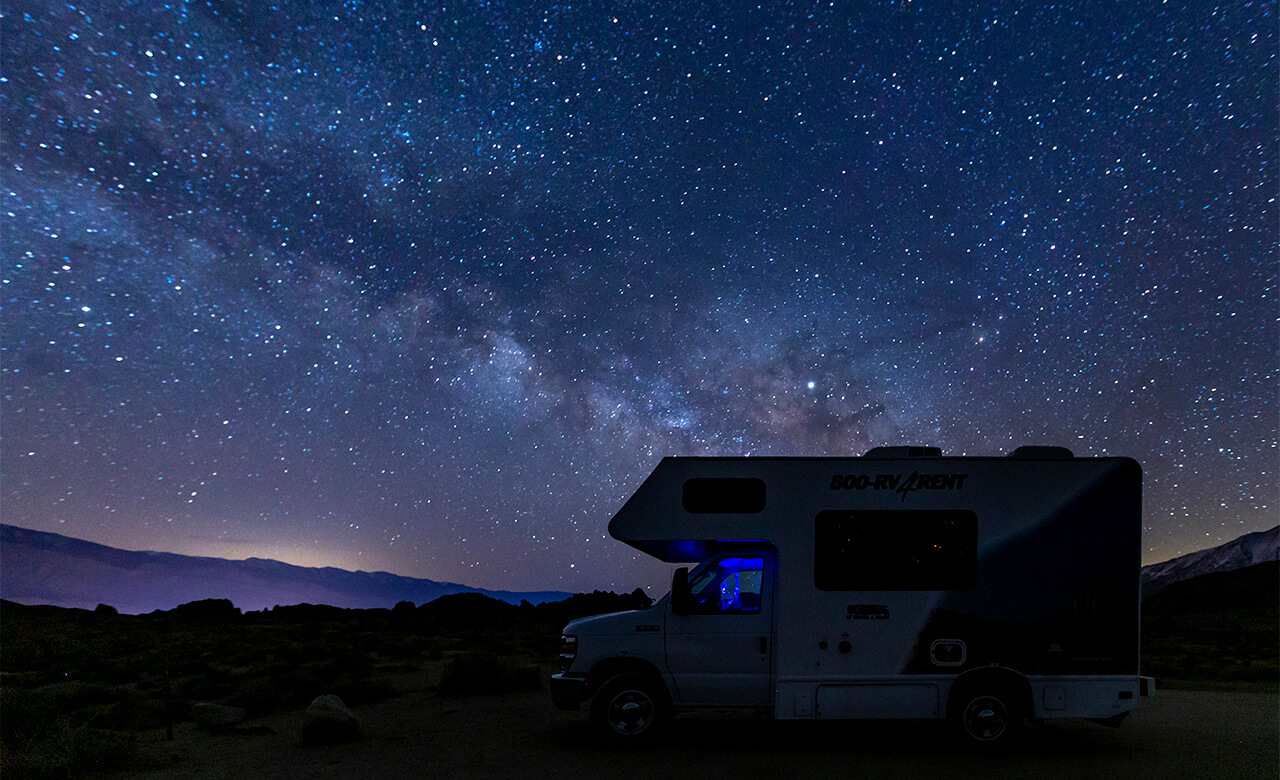
Best Rocky Mountain National Park RV Parks and Campgrounds
Whether you are a first-time RV camper or an experienced nature-lover, Rocky Mountain National Park camping offers the perfect opportunity to enjoy wildlife. Out of the five Rocky Mountain National Park campgrounds, four of them welcome RVs. Check out these campsites and start planning your trip!
Aspenglen Campground
Amenities: Aspenglen Campground is known for its incredible views and wildlife watching. This site allows RVs that are 30 feet in length. As a seasonal campground, amenities are open from May through September. They include food storage lockers, trash recycling collection, ice for sale, firewood for sale, on-site staff, potable water, and flush toilets. Reservations can be made up to six months in advance.
Capacity: 52 tent and RV sites
More information: Aspenglen Campground
Glacier Basin Campground
Amenities: Located six miles south of the Beaver Meadows entrance on Bear Lake Road, Glacier Basin campground has all the same seasonal amenities as Aspenglen, but at a larger campsite. RVs are limited to 35 feet long. Reservations can be made up to six months in advance.
Capacity: 150 tent and RV sites
More information: Glacier Basin Campground
Moraine Park Campground
Amenities: Unlike Aspenglen and Glacier Basin, Moraine Park Campground is open year-round. As the largest campground in the park, it welcomes 40-foot RVs. Year-round amenities include trash and recycling, food storage, potable water, and vault toilets. Seasonal amenities include ice for sale, firewood for sale, on-site staff, a dump station, and flush toilets. Reservations can be made up to six months in advance.
Capacity: 244 tent and RV sites
More information: Moraine Park Campground
Timber Creek Campground
Amenities: Last but not least, Timber Creek sits near the Colorado River. This RV park in Rocky Mountain National Park can accommodate RVs up to 30 feet long. Amenities include seasonal trash and recycling, firewood for sale, ice for sale, a dump station, potable water, and flush toilets. Campgrounds are issued on a first-come-first-serve basis, so get there early!
Capacity: 98 tent and RV sites
More information: Timber Creek Campground
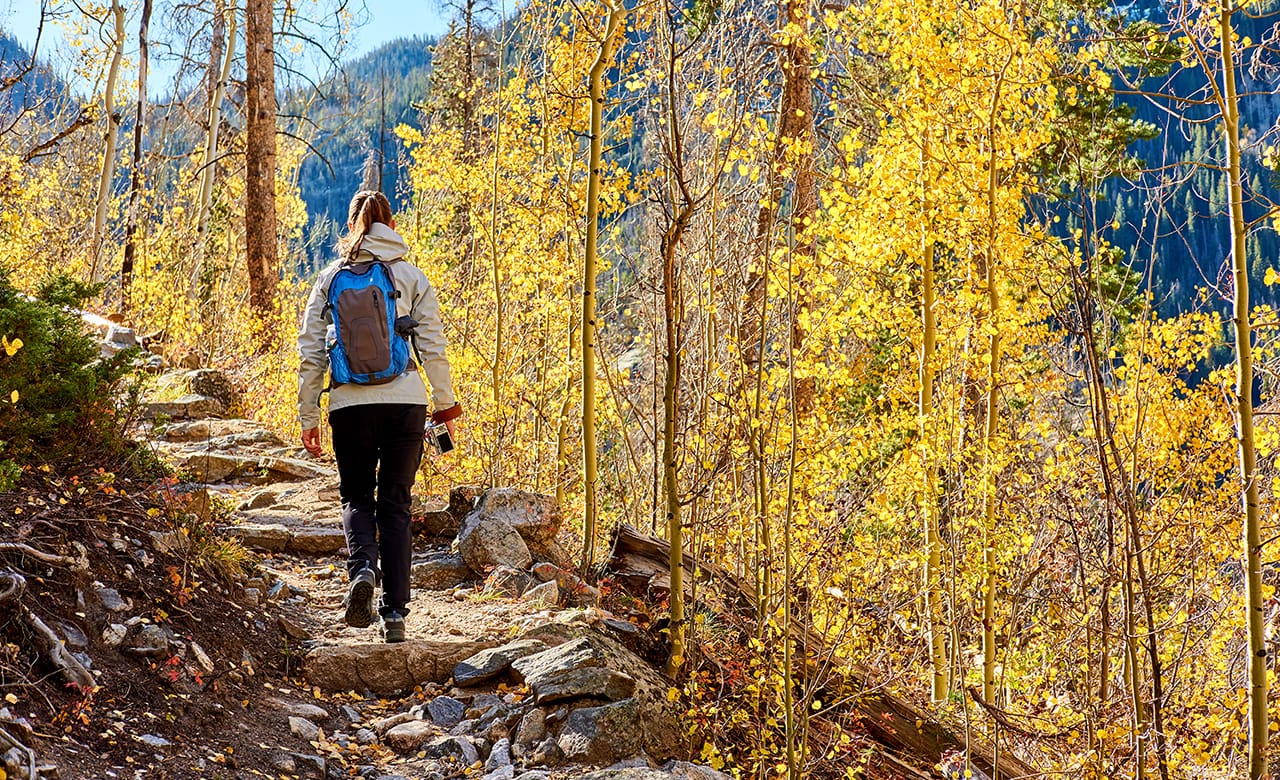
Best Time to Visit Rocky Mountain National Park for RV Camping
Did you know Rocky Mountain National Park is open 24 hours a day, 365 days a year?
Though the park itself is always open, some roads close seasonally due to weather conditions in the park.
So before you start packing your bags, let’s consider what the best time to visit Rocky Mountain National Park is so you can plan your trip!
Winter
If you want to beat the crowds and enjoy winter sports, winter is the best time to visit.
From December to March, winter activities include snowshoeing, cross-country skiing, sledding, and wildlife watching. Skiing and snowshoeing are best experienced from January to March. Though crowds are much smaller this time of year, expect the park to be much busier on the weekends.
For the most part, lower elevations on the east slope of the park don’t have too much snow. However, higher elevations have sudden blizzards, high winds, and deep snow. Typically, the west side of the park experiences more snow than the east side, though it has less wind. If you plan on visiting the high country, expect nighttime temperatures to reach -35 degrees Fahrenheit.
Spring
Spring in Rocky Mountain National Park welcomes warmer weather, vibrant floral colors, and small crowds.
Popular spring activities include hiking, wildlife viewing, and bird watching.
From April to May, high elevations remain snow-packed from winter, but low elevations are typically sunny and snow-free. However, the weather can be unpredictable, alternating from warm to cold and rain to sun within a few hours.
In late April and early May, wildflowers begin blooming in lower elevations, creating great photo opportunities.
Summer
Summer is widely regarded as the best time to visit Rocky Mountain National Park! The weather warms to a comfortable temperature, and trails and campgrounds open for the season.
All hiking and cycling trails are open, fishing opportunities are abundant, and the weather is optimal for rock climbing.
Summer is the camping season in the Rocky Mountains! All campgrounds listed above open in May and close in September, though Moraine Park is open year-round for first-come-first-serve sites.
Summer is also the most popular time to visit. If you want to visit and avoid crowds, consider visiting on a weekday.
From June to August, afternoon thunderstorms and winds are common. Though the weather is warmer, be prepared for temperatures to drop to 10-20 degrees Fahrenheit at night.
Fall
Fall is another busy time of year in Rocky Mountain National Park, though crowds start dissipating in October.
Among many other fun activities, hiking is most popular in the fall due to the crisp, clear air, blue skies, and dry weather. Aspen leaves start changing colors in mid-September, and elk are abundant in the area, creating perfect opportunities for photos and wildlife watching.
From September to November, the weather can be cold, and storms are uncommon, though early snow storms may occur.
Timed Entry Rocky Mountain National Park
Are there timed entry restrictions for Rocky Mountain National Park? Yes, from May 26 through October 22, 2023, you will need a timed entry reservation to visit any part of Rocky Mountain National Park.
To get a timed entry reservation, visit www.rec.gov. You only need to make one timed entry reservation per vehicle.
Note that there have been some changes to the timed entry reservations since 2022.
-
Park Access Timed Entry Permits will be in effect between 9 a.m. and 2 p.m. MDT.
-
40% of all reservations will be released via Recreation.gov on the day prior to a desired arrival date at 5 p.m. MDT
Wildlife in Rocky Mountain National Park
Rocky Mountain National Park is home to a diverse range of wildlife due to its varied ecosystems, including alpine tundra, montane, and subalpine environments. Some of the wildlife you can potentially see at Rocky Mountain National Park include:
-
Elk
-
Mule Deer
-
Bighorn Sheep
-
Moose
-
Black Bears
-
Mountain Lions
-
Coyotes
-
Bobcats
-
Bald Eagles
-
Red Foxes
-
Marmots
-
Trout
-
Beavers
-
And more!
When you see wild animals, keep your distance and don’t try to feed them. Animals can be needlessly injured by people trying to feed them human food.
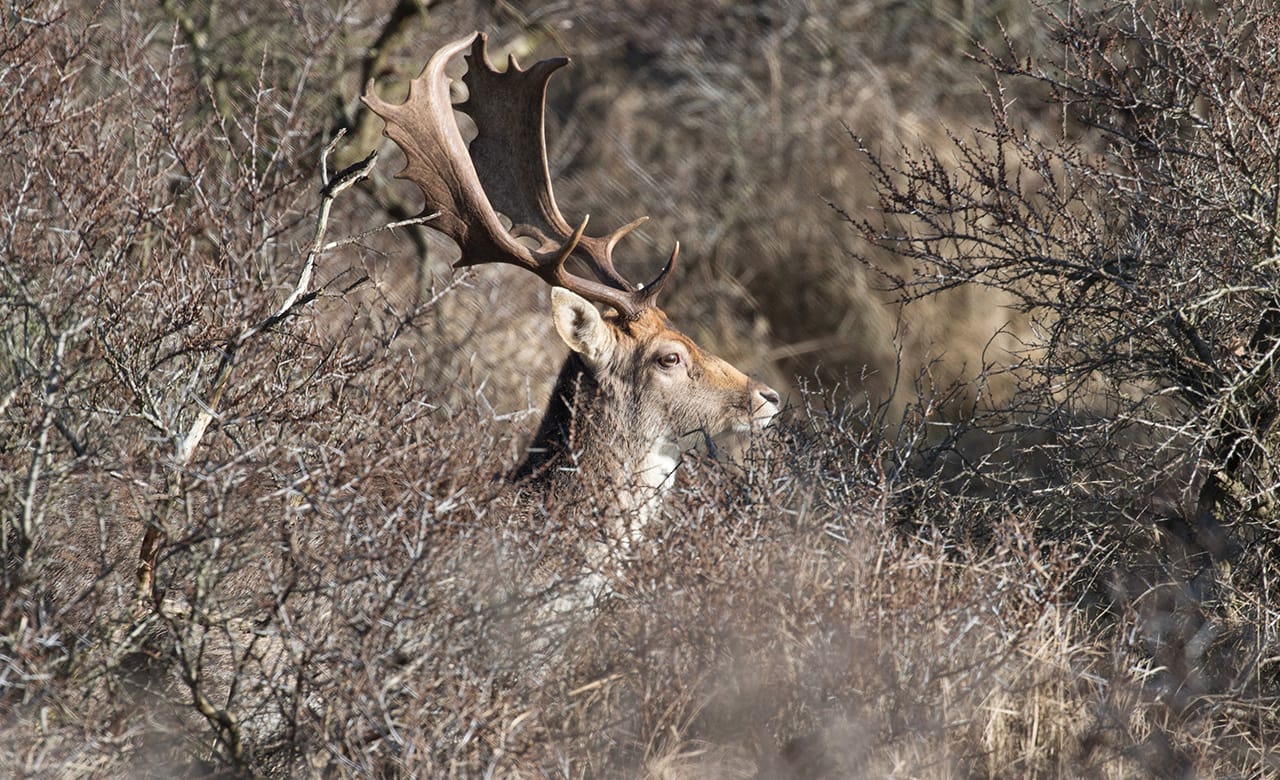
Things to Do in Rocky Mountain National Park
RV camping in Rocky Mountain National Park offers the perfect opportunity to relax, escaping the hustle and bustle of daily life. But if you’re the type of person who likes to keep busy, there are many exciting things to do in Rocky Mountain National Park!
-
With 355 miles of trails, hiking is one of the most popular activities. Whether you would like a peaceful lakeside stroll or a challenging climb to a mountain peak, Rocky Mountain National Park is the place to go! Rangers at the visitor’s centers can direct you to fun trails, or you can check out the guide to popular hiking trails.
-
Want to enjoy the diverse ecosystem with a relaxing scenic drive? The roads take visitors through lowland meadows and aspen groves, along with flowing rivers and up to forests that can reach more than 12,000 feet in elevation.
-
If you love animals, Rocky Mountain National Park is one of the top wildlife destinations in the country. In fact, winter elk herds number between 200 and 600, about 350 bighorn sheep, and many mule deer. Additionally, the 280 species of birds make this national park the perfect spot for bird watching. Whether you want to photograph or simply watch the wildlife, there are many exciting opportunities to spot the beautiful animals year-round.
-
Get up close and personal with nature with one of the national park’s free ranger-led programs. These programs offer guests a great opportunity to learn more about the park and its wildlife.
-
With over 50 lakes and streams and 11 species of fish, there are many picturesque spots for fishing. Just make sure you have a Colorado fishing license!
-
One of the best ways to enjoy the diverse landscape in the park is horseback riding. The experience allows you to take a breath of fresh air and see some of the most beautiful spots in the park. There are two stables located in the park — Glacier Creek Stables and Moraine Park Stables — though there are many other stables located outside the park as well.
-
If you are someone who loves the night sky, Trail Ridge Road is one of the best places in the world to stargaze because it climbs to an elevation of 12,183 feet.
There are plenty of opportunities to explore the great Rocky Mountain National Park — you just need a little imagination and an open mind. Keep reading to learn a few tips about navigating the Rocky Mountains!
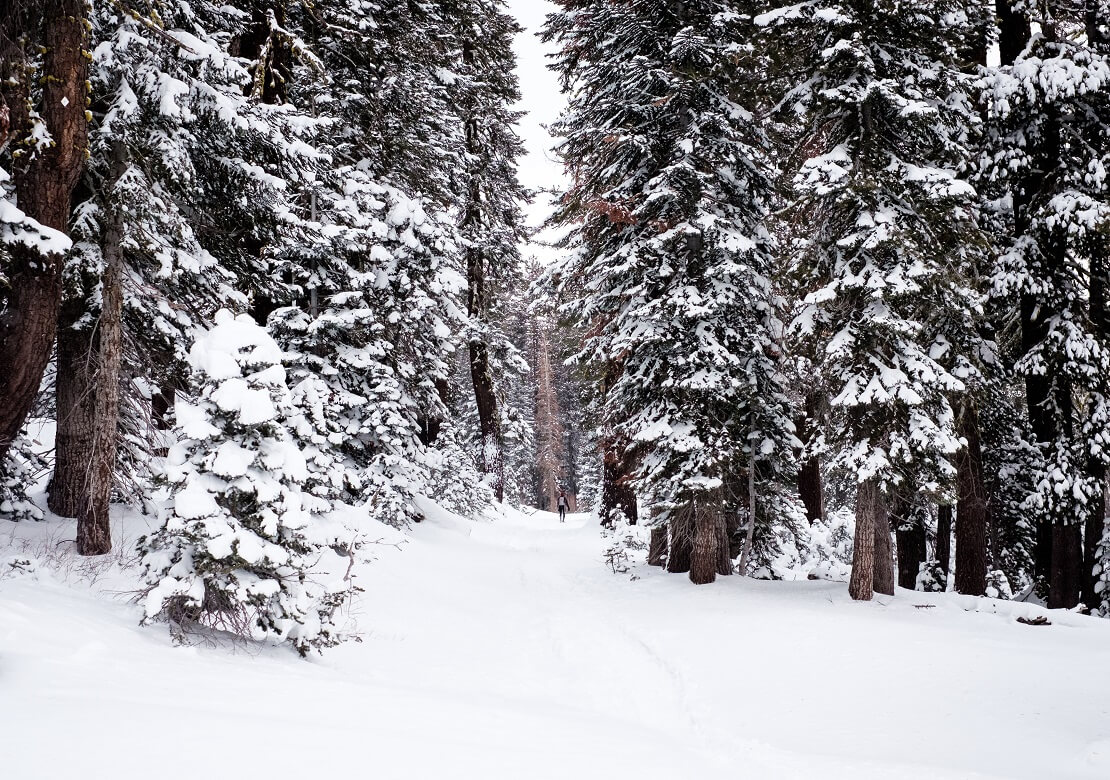
Tips on Visiting Rocky Mountain National Park
Like any national park, you should take some precautions before visiting the Rocky Mountain National Park. Below is a list of tips to guide you during your trip through the park.
-
Altitude sickness commonly occurs in altitudes above 8,000 feet. Elevations are high in Rocky Mountain National Park, so it’s important to be aware of common altitude sickness symptoms. Symptoms include dizziness, fatigue, nausea, and headaches. Most cases of altitude sickness are mild and will go away soon after you reach lower elevations. To prevent altitude sickness, climb mountains gradually and consider stopping to rest for a day or two every 2,000 feet.
-
Stay hydrated and bring extra water for adventures away from your campsite.
-
Cell service is spotty, and many areas do not have cell service. Bring a map if you can’t access your phone's GPS.
-
You are welcome to bring your pet; however, pets are prohibited on all the trails.
-
Bring clothes for all weather! Snow can fall at any time of the year at high elevations. Also, afternoon thundershowers are frequent in the summer.
-
If you are planning to visit in summer or fall, make your reservations early. Also, to avoid crowds, visit on a weekday rather than a weekend.
-
Start hikes as early to avoid crowds, catch more glimpses of wildlife, and avoid afternoon thundershowers.
-
If you don’t want to drive in the park, take the shuttle bus. This service gives you access all around the park, to most campgrounds, and some of the best viewing spots.
Why Go Rocky Mountain National Park Camping in an RV?
Camping in an RV at Rocky Mountain National Park offers several advantages and can be a great way to experience this stunning natural area. Here are some reasons why people choose to camp in RVs at the park:
Comfort and Convenience: RV camping provides a higher level of comfort and convenience compared to traditional tent camping. You have access to a bed, kitchen facilities, a bathroom, and often heating or air conditioning, depending on the RV type. This can be especially appealing for those who prefer not to rough it in the wilderness.
Shelter from the Elements: RVs offer protection from adverse weather conditions such as rain, wind, and extreme temperatures, ensuring a more comfortable camping experience, even during inclement weather.
Kitchen Facilities: Most RVs have a kitchen area, including a stove, refrigerator, and sink. This allows you to prepare and cook your meals with ease, saving you from relying on campfires or camp stoves.
Bathroom Facilities: RVs have built-in bathrooms with toilets and showers, eliminating the need to use communal restroom facilities in campgrounds.
Security: RVs provide a secure and enclosed space to store your belongings, making it less likely for wildlife to access your food or belongings. It can also provide a sense of security against potential intruders.
Accessibility: RV campgrounds in Rocky Mountain National Park often have paved sites and amenities like electricity and water hookups, making it more accessible for individuals with mobility issues or those who prefer a bit more comfort while camping.
Family-Friendly: RV camping is family-friendly and can be a great way to introduce children to camping without the challenges of setting up and maintaining a tent.
It's important to note that RV camping in Rocky Mountain National Park typically requires advance reservations, as campgrounds can fill up quickly, especially during peak seasons. Additionally, it's essential to follow park regulations, practice Leave No Trace principles, and be respectful of the natural environment while RV camping to help preserve the park's beauty for future generations.
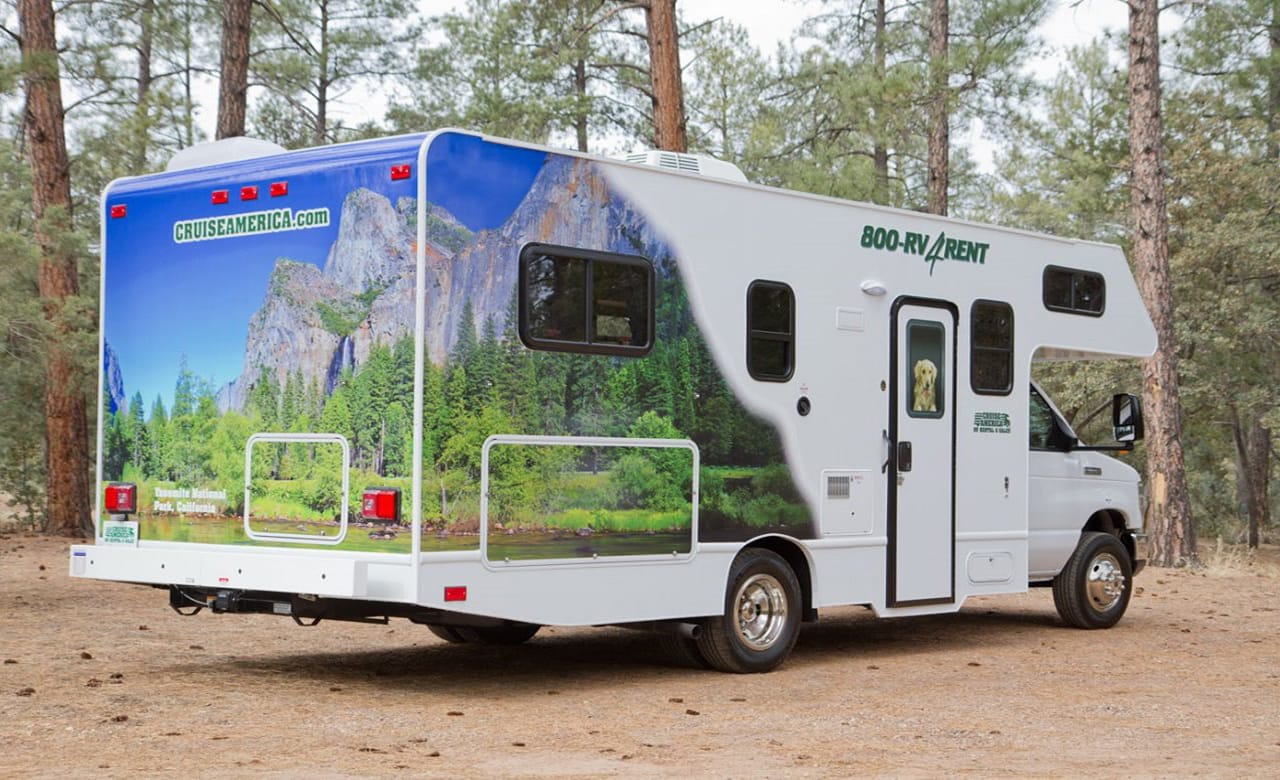
RV Rental for Rocky Mountain National Park
Now that you know everything about RV camping in Rocky Mountain National Park, you’re ready to plan your next great adventure!
Cruise America is the place to go for quality RVs at the best price! Each RV is pet-friendly and allows towing. Additionally, you’ll get all the amenities you’ll need, including a freshwater toilet, gas cooktop, generator, refrigerator, microwave, shower, and heating system to keep you warm year-round!
Are you ready to start planning your Rocky Mountain National Park trip? Rent an RV with Cruise America today to get started!
